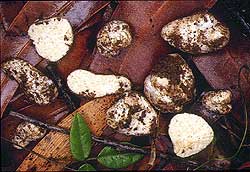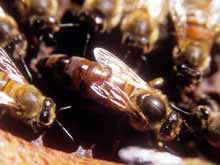Life Sciences and Chemistry
Articles and reports from the Life Sciences and chemistry area deal with applied and basic research into modern biology, chemistry and human medicine.
Valuable information can be found on a range of life sciences fields including bacteriology, biochemistry, bionics, bioinformatics, biophysics, biotechnology, genetics, geobotany, human biology, marine biology, microbiology, molecular biology, cellular biology, zoology, bioinorganic chemistry, microchemistry and environmental chemistry.

Purdue researchers discover basis for biological clock
The biological clock – timekeeper for virtually every activity within living things, from sleep patterns to respiration – is a single protein, Purdue University researchers report.
The husband and wife team of D. James and Dorothy Morré has discovered this protein, which is responsible for setting the length of periods of activity and inactivity within cells. If the protein is altered, an organism’s body will experience “days” of different length – ranging from 22 to 42 hours in

World-first Australian truffle find
An Australian scientist has made a discovery which is electrifying world fungal biology – a new truffle genus related to the famous Amanita family, or fairy toadstools.
The Amanita family is famed worldwide for the red and white-spotted toadstools beloved of children’s fairy tales, the lethal Death Cap beloved of tabloid media, and a range of delicious edible fungi beloved of gourmets.
The find, by CSIRO Forestry and Forest Products mycologist Dr Neale Bougher, highli

Honey bee genome being sequenced
The department of entomology at Texas A&M University is abuzz with the news the honey bee genome is being sequenced by the Baylor College of Medicine Human Genome Sequencing Center, especially since Texas A&M helped that project take flight.
“This is a huge deal,” said Dr. Spencer Johnston, professor of entomology with the Texas Agricultural Experiment Station.
The honey bee was one of five species recently selected by the National Institutes of Health to have its genome sequenced

Evidence for orangutan culture
An international collaboration of primatologists has gleaned evidence from decades of observations of orangutans that the apes show behaviors that are culturally based.
The scientists’ findings push back the origins of culturally transmitted behavior to 14 million years ago, when orangutans first evolved from their more primitive primate ancestors. Previous evidence for cultural transmission in chimpanzees suggested an origin of cultural traits 7 million years ago.
The research

Research finds life 1000 feet beneath ocean floor
A new study has discovered an abundance of microbial life deep beneath the ocean floor in ancient basalt that forms part of the Earth’s crust, in research that once more expands the realm of seemingly hostile or remote environments in which living organisms can apparently thrive.
The research was done off the coast of Oregon near a sea-floor spreading center on the Juan de Fuca Ridge, by scientists from Oregon State University and several other institutions. It will be published Friday

Knocking the Sox off early mammalian development
Scientists find key embryonic stem cell gene
Scientists have identified a gene that is required during early mammalian embryogenesis to maintain cellular pluripotency – the ability of an embryonic cell to develop into virtually any cell type of the adult animal. This discovery by Dr. Robin Lovell-Badge and colleagues at the MRC National Institute for Medical Research (London, UK) that the Sox2 gene is necessary to sustain the developmental plasticity of embryonic cells sheds new light